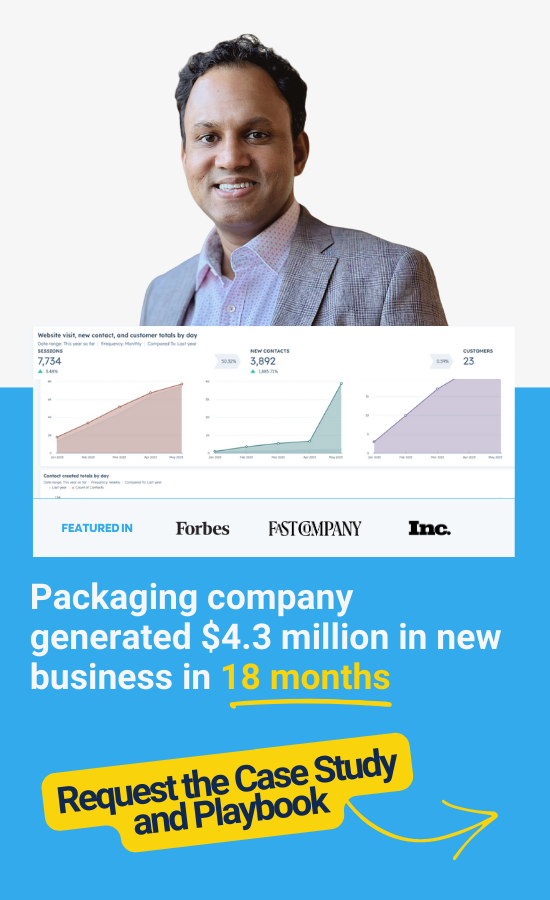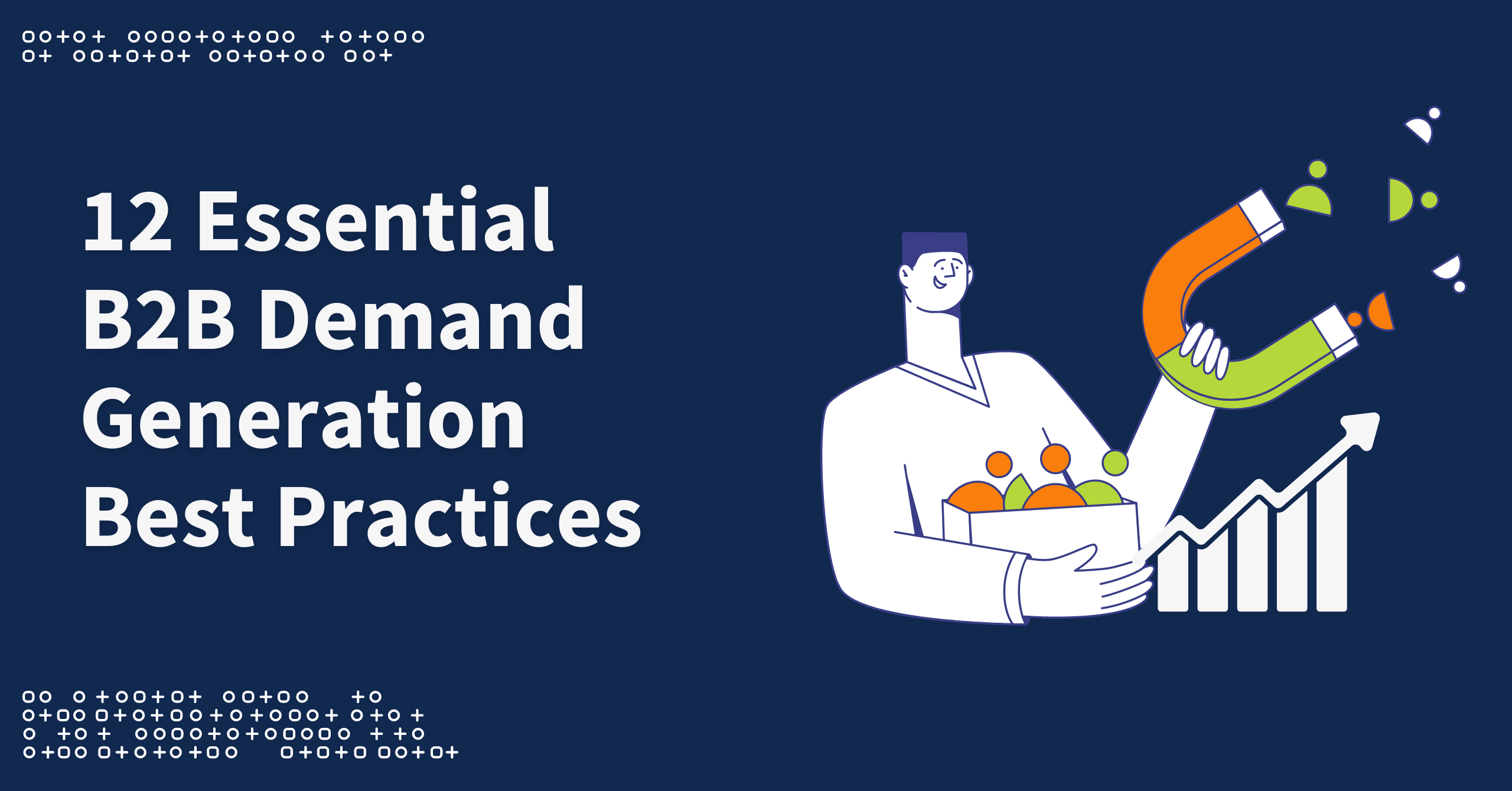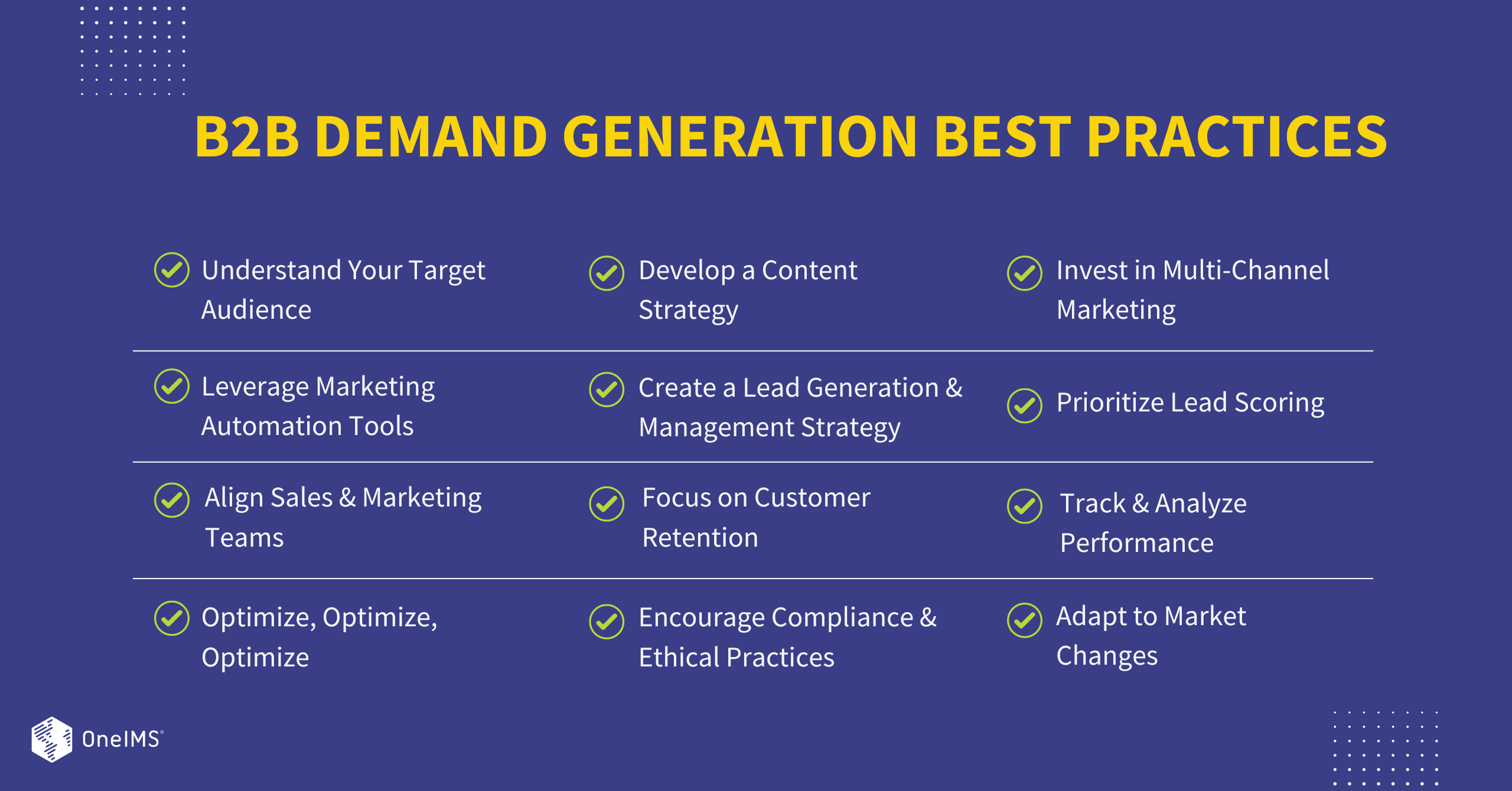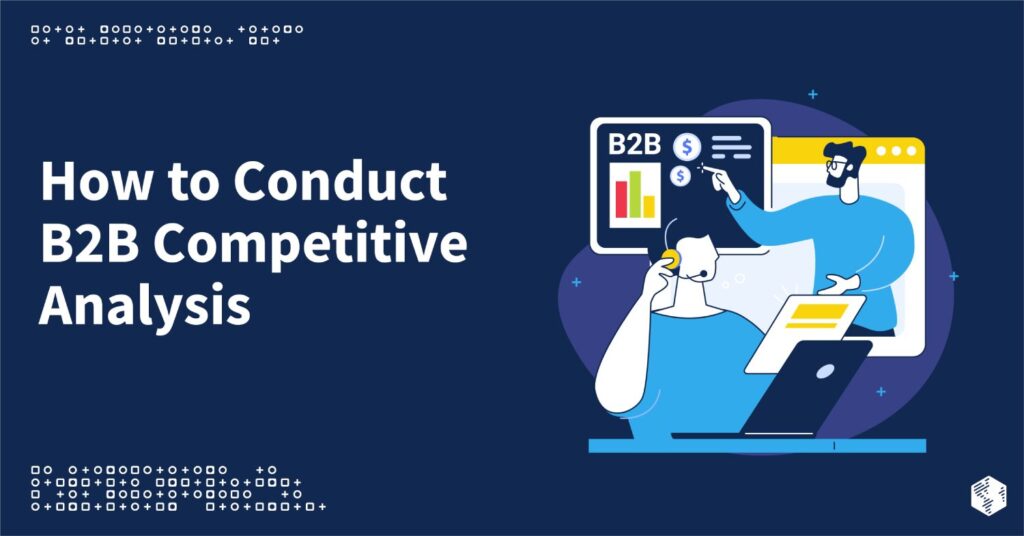Demand generation—the process of stimulating awareness of your brand and interest in your products or services—is an essential part of any sustainable business-to-business (B2B) growth strategy. B2B marketers and salespeople know the power of building relationships with leads and guiding them through the buyer’s journey, and that’s why demand generation is now considered a tried-and-true approach.
However, demand generation is only successful when it’s done right. Too many B2B companies start off on the wrong foot or make mistakes that lead them down the road to nowhere.
This year, let’s throw out the old ways of doing demand generation and bring in the proven best practices that will transform your marketing and sales efforts.
What Is a B2B Demand Generation Framework?
A demand generation framework is a strategic plan of action to develop, implement, and measure marketing and sales initiatives that drive demand for your B2B business’s products or services. This roadmap includes processes, tactics, and strategies designed to build reliable brand awareness, create a buzz about your company, and generate high-quality leads.
Demand generation is divided into two stages: demand creation and demand capture.
Demand Creation
Demand creation focuses on the portion of your target market who is not actively looking for a solution to their problem—the problem your company’s products or services address. It involves generating awareness of both the problem and its solution by creating and distributing content tailored to a wider audience that educates them about their pain points.
Demand Capture
Demand capture addresses leads who are actively seeking a solution to their problem. This process includes engaging content that helps prospective buyers see how your B2B company is the best fit for their needs. While demand creation casts a wider net on channels such as social media and podcasts, demand capture focuses on the channels your audience uses when they are close to making a purchase, such as email marketing or your business’s landing pages.
Demand Generation Best Practices for B2B
Since demand generation is a broad, holistic strategy that involves a combination of many different types of marketing and sales tactics working together to create interest in your B2B brand and capture high-quality leads, there are a lot of moving pieces.
As you create and implement a demand generation framework for your business, follow these proven best practices.
1. Understand Your Target Audience
Identifying and defining your target audience is the first step to creating an effective demand generation framework.
Start by creating buyer personas and negative buyer personas, which require extensive audience research into their demographics, purchasing behaviors, pain points, challenges, goals, and preferences. These insights will be the foundation of the rest of your approach to B2B demand generation.
2. Develop a Content Strategy
Once you have a clear understanding of your ideal customers, you can create and distribute content that will resonate with them. Develop informative blog posts, white papers, case studies, and ebooks as well as multimedia content (videos, podcasts, infographics) and interactive content (quizzes, webinars, product demonstrations) that addresses the pain points, interests, and preferences of your target audience.
At the same time, it’s equally important to implement search engine optimization (SEO) best practices to ensure your content is delivered to the right people at the right time via the right channel. Optimize content assets for relevant keywords and create a mobile-friendly website so it’s easy for your audience to find and access your content.
3. Invest in Multi-Channel Marketing
An important part of a successful demand generation strategy is identifying the channels that most effectively reach your target audience. By investing in a multi-channel marketing approach, you can increase your scope and maximize your demand generation efforts.
Social media is, of course, a powerful demand generation channel. Use social media to connect with potential buyers, share valuable content, and inform a wider audience about your brand. Paid advertising—including pay-per-click (PPC) ads and social media ads—is another effective way to get the word out about your products and services. And don’t forget about email marketing, which is one of the best ways to nurture leads and guide them along the sales funnel.
Take advantage of these channels as well as anywhere else your target audience spends their time online to drive qualified leads to your website.
4. Leverage Marketing Automation Tools
Marketing automation tools can streamline lead nurturing, automatically engage with leads at various stages throughout the buyer’s journey, qualify and score leads, deliver ads at the right time, and distribute personalized content at scale. Why wouldn’t you utilize this technology as part of your demand generation strategy?
Leverage the benefits of marketing automation technology to simplify and optimize your demand generation workflows.
5. Create a Lead Generation & Management Strategy
Lead generation and management strategies focus on capturing and nurturing B2B leads, making these efforts a critical part of any demand generation initiative. Popular lead generation tactics, including account-based marketing (ABM) and lead nurturing, help your business engage with potential customers and build trust with your target audience.
It’s also important to create compelling lead magnets—incentives you can offer to leads in exchange for their contact information. Develop valuable resources like ebooks, webinars, and white papers to attract leads, and use landing pages on your website to capture them.
6. Prioritize Lead Scoring
Not all leads are created equal. Even the best demand generation campaigns will capture some leads that aren’t worth your time. But when leads come down the funnel, how do your marketers and salespeople know which ones to prioritize?
Lead scoring is a method of qualifying leads. By establishing criteria for identifying leads that are most likely to turn into paying customers, you can prioritize high-quality leads and focus your efforts on converting them. This process not only reduces wasted time but also increases your lead conversion rate.
7. Align Sales & Marketing Teams
Siloed marketing and sales teams lead to disorganized, ineffective demand generation campaigns. To create a cohesive demand generation strategy and convert the right prospects into customers, these teams need to work together, share data, and have the same goals.
Align marketing and sales teams by establishing communication channels and clear feedback loops. Set regular meetings between departments, define shared goals and key performance indicators (KPIs), and use insights from each team to adjust the strategies of the other.
Open collaboration and cooperation between sales and marketing will ensure your business is targeting the right leads and nurturing prospects throughout the sales funnel.
8. Focus on Customer Retention
Attracting new prospects and converting them into buyers is half the battle. If you want to increase conversions and generate more demand for your products or services, you need strategies in place to retain existing customers.
Why? Because happy, engaged, loyal customers not only become repeat customers but also spread the news about your brand through word-of-mouth (WOM) marketing. They will talk about your business with their colleagues and share their positive experience with your brand, bringing in new leads through referrals and increased brand awareness.
Develop post-purchase engagement strategies, such as nurturing existing buyers with relevant content, that encourage customer advocacy and referrals.
9. Track & Analyze Performance
Tracking and analyzing the performance of your demand generation initiatives is the only way to see what’s working and what can be improved.
Define and monitor KPIs such as lead conversion rates, lead quality, customer acquisition cost (CAC), cost per lead (CPL), customer lifetime value (CLV) so you can track progress toward specific goals. Additionally, use tools like Google Analytics to track website performance and marketing automation software to analyze campaign insights.
By tracking KPIs and other metrics, you will be able to monitor the progress of your demand generation efforts.
10. Optimize, Optimize, Optimize
Demand generation is an ongoing process, and successful demand generation requires you to continuously optimize your strategy.
With the insights you gain from tracking and analyzing demand generation performance and KPIs, you can make data-driven decisions about how to optimize your campaigns, refine your strategy, and meet your growth goals. Based on the results, you can identify the strongest channels, find bottlenecks and weak points, and adjust accordingly.
11. Encourage Compliance & Ethical Practices
People are more hesitant than ever to give their contact information to a business. And with data breaches and privacy violations constantly making headlines, who can blame them?
Reassure prospects and customers that your B2B company prioritizes compliance with data protection laws, privacy regulations, and ethical standards. Always ask for explicit consent from leads before collecting their data, and inform them of how and why that information is being collected. Ensure that all data collected is secure and protect sensitive information by establishing robust security measures. Additionally, train your demand generation team about the importance of following ethical practices as well as the consequences of non-compliance.
Transparency is essential to the credibility and trustworthiness of your B2B brand.
12. Adapt to Market Changes
The B2B landscape is constantly evolving—and as the market changes, so should your approach to demand generation.
Stay up to date on news in your industry. Keep informed of industry and market changes, and adapt your strategies based on shifting customer behaviors. We recommend listening to podcasts and watching videos by B2B leaders to get started.
Create & Capture Demand for Your B2B Brand
Demand generation is the key to increasing brand awareness, driving interest in your products or services, building stronger relationships with high-quality leads, shortening your sales cycle, and achieving your revenue goals. By following these best practices, your B2B company will be ready to create and implement a successful demand generation strategy in 2024.
Need help optimizing your demand generation efforts and growing your business? We’re ready to partner with you. Schedule a consultation with us today to learn more about how OneIMS can propel your B2B business to new heights.



































